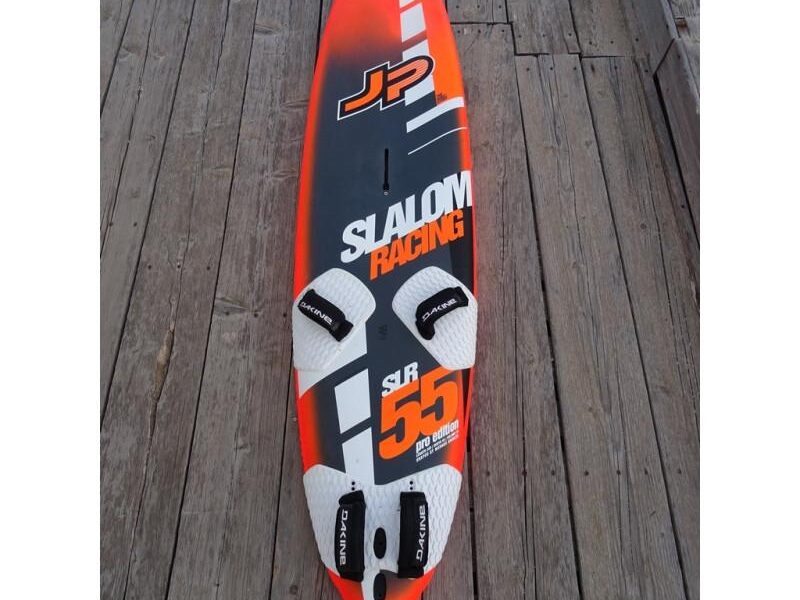In the world of motorsport, where speed meets precision, slalom car racing emerges as a thrilling test of skill and control. Unlike the high-octane spectacle of traditional circuit racing, slalom racing distills the essence of driving into a challenging dance between man and machine. Picture a winding course peppered with strategically placed cones, each turn demanding not just the horsepower of the vehicle, but the finesse of the driver. As competitors navigate this delicate ballet of acceleration and braking, they showcase the artistry of vehicle handling against the backdrop of roaring engines and eager spectators. In this article, we delve into the intricacies of slalom racing, exploring its origins, techniques, and the passionate community that fuels its growing popularity. Whether you’re a seasoned racer or a curious onlooker, join us as we unravel the excitement of this captivating motorsport.
Table of Contents
- Mastering the Art of Precision: Techniques for Successful Slalom Racing
- Essential Gear for Slalom Success: Choosing the Right Equipment
- Understanding the Course: Strategies for Navigating Slalom Challenges
- Building Speed and Control: Enhancing Your Driving Skills for Slalom Events
- Q&A
- In Retrospect
Mastering the Art of Precision: Techniques for Successful Slalom Racing
In the world of slalom racing, the difference between victory and defeat is often measured in fractions of a second. To master the art of precision, racers must hone several key techniques that allow them to navigate through tight turns and obstacles with agility. Understanding your vehicle’s dynamics is essential; this encompasses the details of weight distribution, steering response, and throttle control. Skilled drivers frequently exploit techniques such as weight shifting during turns and utilizing the full width of the track to maintain momentum and speed while cornering.
Additionally, developing a fine-tuned sense of spatial awareness can greatly enhance performance. Practicing visual cues—like focusing on the apex of each corner—can help drivers prepare for the next move. Other vital strategies include regular training sessions to improve reflexes and muscle memory, as well as breaking down the course into manageable segments. Below are some specific strategies that can contribute to a successful slalom racing experience:
- Consistent practice: Regularly practicing on slalom courses to develop familiarity.
- Precision steering: Focusing on smooth and deliberate steering inputs to improve handling.
- Throttle control: Learning to balance acceleration and deceleration to maintain speed without losing control.
- Trail braking: Mastering the art of braking while entering a turn to optimize grip and balance.
Essential Gear for Slalom Success: Choosing the Right Equipment
When gearing up for slalom car racing, making informed choices about your equipment can significantly influence your performance on the track. Racing tires are paramount, as they provide the necessary grip and responsiveness needed to navigate tight turns efficiently. Look for tires specifically designed for slalom situations, balancing wear resistance with high traction. Additionally, suspension systems play a crucial role. Adjustable coilovers allow drivers to fine-tune their vehicle’s handling characteristics, enabling them to optimize the setup for their driving style and the track’s demands. Ensure your suspension is set up not just for comfort but for performance, as this can make a substantial difference in cornering stability and speed.
Equally important is the driver’s safety gear, which should never be overlooked. Investing in a high-quality racing harness and a fireproof racing suit is essential, as they protect you in case of accidents. Helmets must meet appropriate safety standards, featuring full-face designs to shield against impacts and debris. Don’t forget about the role of steering wheels, which provide a tactile connection to the car, allowing for precise inputs during maneuvers. Below is a helpful comparison table to assist you in making choices regarding essential gear:
| Equipment | Purpose | Recommendations |
|---|---|---|
| Racing Tires | Maximize grip and responsiveness | Look for slalom-specific designs |
| Suspension Systems | Improve handling and stability | Consider adjustable coilovers |
| Safety Gear | Ensure driver protection | Invest in high-quality helmets and suits |
| Steering Wheels | Enhance vehicle control | Choose a design that feels right for you |
Understanding the Course: Strategies for Navigating Slalom Challenges
Slalom car racing demands a keen understanding of the course layout and the intricacies of navigating through a series of tightly spaced markers. To excel, participants must adopt specific strategies that not only enhance their skills but also optimize their performance. Key tactics include:
- Visualizing the Path: Before hitting the course, mentally map out your route, identifying the entry and exit points for each gate.
- Timing Your Turns: Practice how to initiate a turn well before reaching a marker to maintain speed and control.
- Adjusting Speed: Master the art of throttle control; accelerate and decelerate appropriately to maximize your agility on turns.
- Utilizing Weight Transfer: Learn to shift your body weight strategically to help your car pivot around corners smoothly.
Moreover, analyzing course conditions, such as surface grip and potential environmental obstacles, can significantly impact your strategy. Consider this concise overview of factors to evaluate:
| Factor | Impact on Racing |
|---|---|
| Surface Type | Affects tire grip and handling |
| Weather Conditions | Influences visibility and traction |
| Gate Placement | Determines optimal racing line |
| Obstacle Presence | Requires adaptive maneuvers |
By implementing these strategies and remaining acutely aware of the various elements at play, racers can enhance their capability to navigate through slalom challenges, turning each run into an exhilarating test of skill and precision.
Building Speed and Control: Enhancing Your Driving Skills for Slalom Events
Mastering the art of speed and control is crucial for any driver looking to excel in slalom events. These competitions demand not only quick reflexes but also an intimate understanding of vehicle dynamics. To enhance your driving skills, focus on precision steering, smooth throttle application, and braking techniques. Here are some essential tips to elevate your performance on the course:
- Visualize the Course: Before you even set tires on the circuit, take a moment to mentally map out the slalom course. This mental rehearsal will improve your reaction times and help you anticipate maneuvers.
- Optimize Your Line: Always strive for the optimal racing line; this minimizes distance and maximizes speed through the cones.
- Practice Weight Transfer: Learn how to shift weight effectively between the front and rear of the car during turns to maintain control while maximizing speed.
| Skill Area | Focus Points | Benefits |
|---|---|---|
| Steering | Precision | Improved accuracy in turns |
| Throttle Control | Smoothness | Maximized acceleration out of corners |
| Braking | Trail Braking | Enhanced stability while entering turns |
Beyond technique, practice is your best ally in becoming a formidable slalom competitor. Regularly participating in practice sessions will hone your muscle memory and deepen your understanding of the car’s handling characteristics. Consider engaging in timed runs, where the pressure of the clock will simulate race conditions and prompt you to push your limits. Feedback from fellow racers or instructors can further refine your approach, offering insights that may uncover blind spots in your technique. Remember, the goal is to blend speed with finesse, achieving harmony between power and control as you navigate through the slalom course.
Q&A
Q&A: All You Need to Know About Slalom Car Racing
Q: What exactly is slalom car racing?
A: Slalom car racing is a motorsport discipline that involves navigating a course marked by a series of cones or gates. Competitors race against the clock, maneuvering their vehicles through tight turns and obstacles, showcasing their precision and skill.
Q: How does a slalom course differ from other racing formats?
A: Unlike traditional racing formats that prioritize speed over tracks with fewer obstacles, slalom courses are specifically designed to challenge a driver’s handling and agility. Courses are typically shorter, with closely spaced cones that test the driver’s ability to make sharp turns without hitting the obstacles.
Q: What types of vehicles are used in slalom racing?
A: While any car can technically participate in slalom racing, most drivers use compact sports cars or modified vehicles that are agile and responsive. Common choices include hatchbacks, sedans, and even some high-performance vehicles, depending on the class of competition.
Q: What skills are essential for success in slalom racing?
A: Successful slalom drivers need a combination of precision steering, quick reflexes, and excellent spatial awareness. They must be able to gauge distances accurately and know how to adjust their speed and trajectory to navigate the course efficiently without incurring penalties.
Q: Are there any specific techniques that slalom racers use?
A: Yes! Drivers often employ techniques like “brake-and-turn,” where they brake before entering a turn to maintain control, and “drifting,” where they intentionally oversteer to navigate sharp corners more smoothly. Mastering weight transfer and balance in the vehicle also plays a crucial role in improving lap times.
Q: How do slalom competitions typically work?
A: Competitions usually consist of timed runs through a set course. Drivers typically get multiple attempts to post their best time, with penalties assessed for hitting cones or failing to pass between gates. The driver with the fastest cumulative time often wins the event.
Q: Is slalom racing dangerous?
A: Like all motorsports, slalom racing carries inherent risks. However, the controlled environment and focus on skill over speed help to minimize dangers. Safety measures such as helmets, roll cages, and protective gear are mandatory for participants to enhance safety during events.
Q: How can someone get started in slalom racing?
A: To start slalom racing, it is advisable to join a local motorsport club or association that organizes events. Many clubs offer novice training days or instructional courses, providing beginners with guidance on driving techniques, safety protocols, and the basics of maintaining a competitive edge.
Q: What makes slalom racing appealing to enthusiasts?
A: Slalom racing appeals to many due to its emphasis on individual skill and technique. It allows drivers to connect with their vehicles and hone their driving capabilities in a fun, competitive atmosphere. Additionally, participants often enjoy the camaraderie among fellow racers and the thrill of personal improvement.
Q: Can slalom racing be enjoyed by all age groups?
A: Absolutely! Slalom racing is inclusive, with events often welcoming participants from various age groups. Many organizations have categories for juniors and seniors, thus fostering an environment where drivers of all backgrounds can compete and share their passion for motorsports.
Whether you’re behind the wheel or cheering from the sidelines, slalom car racing embodies the spirit of automotive agility and community, making it an exhilarating experience for all involved.
In Retrospect
As we weave through the exhilarating world of slalom car racing, it’s clear that this motorsport transcends mere competition; it embodies a dance between man, machine, and the art of precision. The tight turns and strategic maneuvers challenge drivers not only to navigate obstacles but to push their limits, turning the course into a thrilling testament of skill and speed. Whether you’re a seasoned racer, a passionate enthusiast, or a curious onlooker, the dynamic nature of slalom racing invites all to appreciate the careful choreography that unfolds in every run. As the engines cool and the chequered flags are put away, the spirit of slalom racing lingers, inspiring the next generation to take the wheel and embrace the challenge that lies ahead. In this ever-evolving sport, one thing remains certain: the journey through the slalom course is as captivating as the finish line itself.



